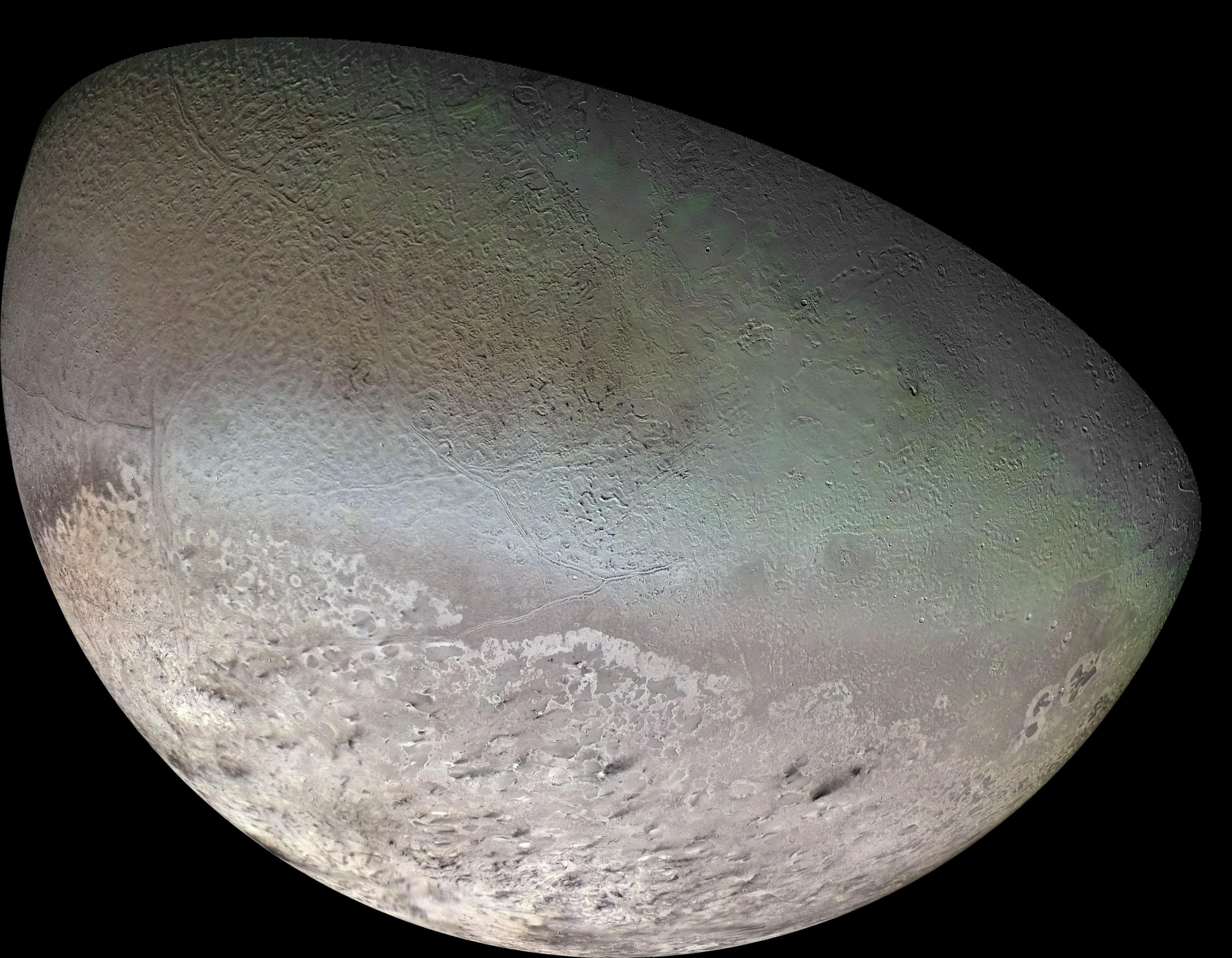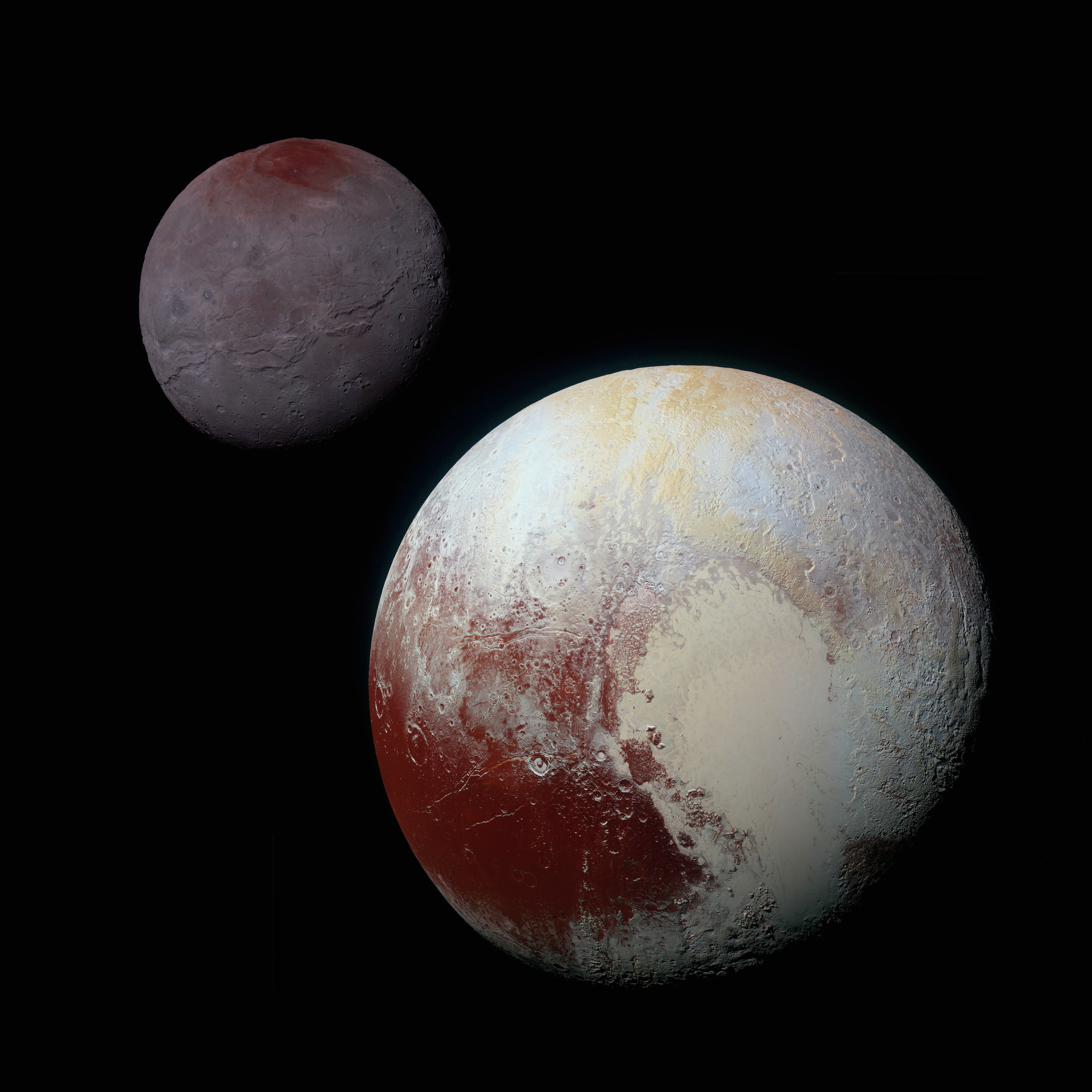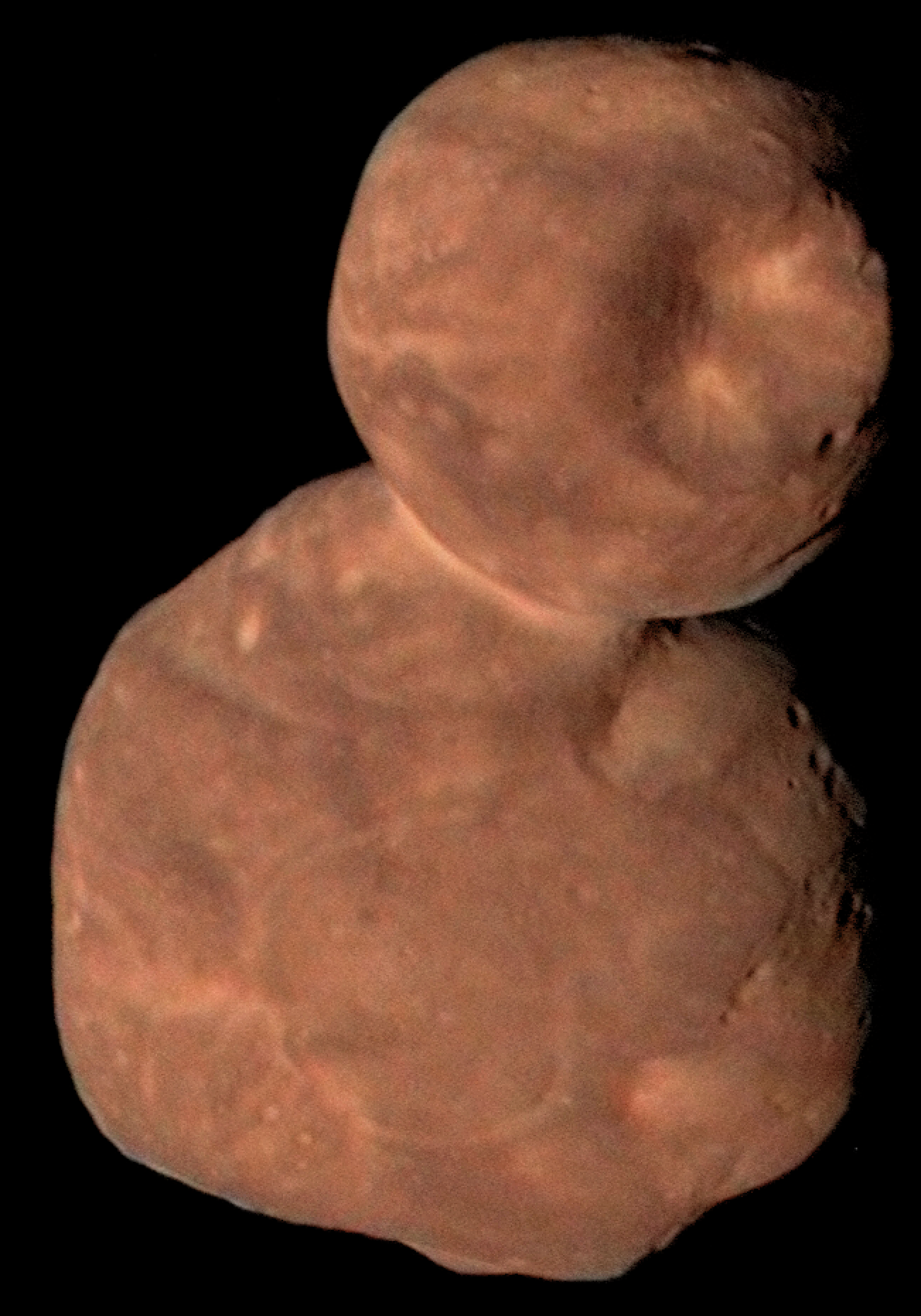1 min read
Triton (Voyager 2)

This global color mosaic of Neptune’s moon Triton, likely a captured Kuiper Belt Object, was taken in 1989 by Voyager 2 during its flyby of the Neptune system. Triton is by far the largest satellite of Neptune.
About the Data
- Data DescriptionData DescriptionProposal: A description of the observations, their scientific justification, and the links to the data available in the science archive.
Science Team: The astronomers who planned the observations and analyzed the data. "PI" refers to the Principal Investigator.
- Release DateOctober 28, 2020
- Science ReleaseNASA’s Webb To Examine Objects in the Graveyard of the Solar System
- CreditImage: NASA, NASA-JPL, USGS
Related Images & Videos

Pluto and Charon (New Horizons)
Pluto and its largest moon, Charon, are two of the most well-known residents of the Kuiper Belt. This composite of enhanced color images of Pluto (lower right) and Charon (upper left), was taken by NASA’s New Horizons spacecraft as it passed through the Pluto system on July 14,...

Arrakoth (New Horizons)
Though not on Webb’s target list, Arrokoth is probably exemplary of a lot of objects in the Kuiper Belt. The farthest object ever visited by a spacecraft, it is composed of two, joined planetesimals. Arrokoth was photographed by the New Horizons spacecraft in December 2018 and...
Share
Details
Laura Betz
NASA’s Goddard Space Flight Center
Greenbelt, Maryland
laura.e.betz@nasa.gov
NASA, NASA-JPL, USGS































